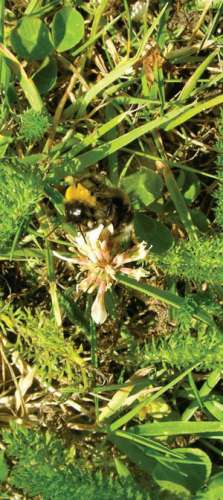
The widespread decline of both wild and managed bee populations has raised alarms for more than a decade due to the importance of bees as pollinators of both agricultural crops and wild plants. Pesticide exposure has long been considered a likely culprit, implicated in changes in bee behavior and reduced production by colony queens. A new study by researchers at the University of London found that exposure to combinations of pesticides can make worker bees less efficient at collecting pollen and reduce a colony’s chances of success.
Richard Gill and Nigel Raine investigated social bumblebee species that rely on the collective performance of many worker bees for the colony’s success. They wrote in the journal Nature that their study mimicked realistic scenarios in which 40 early-stage bumblebee colonies received four-week exposure to two common pesticides. Imidacloprid, the most widely used insect neurotoxin in the world, was provided in a sucrose solution at levels that could be found in nectar. Cyhalothrin, a synthetic insecticide that mimics a chemical in chrysanthemums, was used according to label directions for field-spraying applications.
In colonies exposed to a combination of the pesticides or to only cyhalothrin, more than a third of the worker bees died, compared to just nine percent mortality in unexposed colonies. Two colonies exposed to both pesticides failed completely within a week. Using radio frequency identification tags to track 259 bees on 8,751 trips to collect pollen, the researchers found that bees exposed to both pesticides or to Imidacloprid alone took longer to collect pollen or gathered less pollen per trip. This lower foraging efficiency meant that these colonies had to send out more bees, many of which did not return. On average, the number of lost worker bees was 55 percent higher in colonies exposed to Imidacloprid than those not exposed to pesticides.
“The novelty of this study is that we show how sublethal pesticide exposure affects individual bee behavior, with serious consequences for the performance of the colony as a whole,” said Gill.
“Policymakers need to consider the evidence and work together with regulatory bodies to minimize the risk to all bees caused by pesticides, not just honeybees,” added Raine. “Currently, pesticide usage is approved based on tests looking at single pesticides. However, our evidence shows that the risk of exposure to multiple pesticides needs to be considered, as this can seriously affect colony success.”

